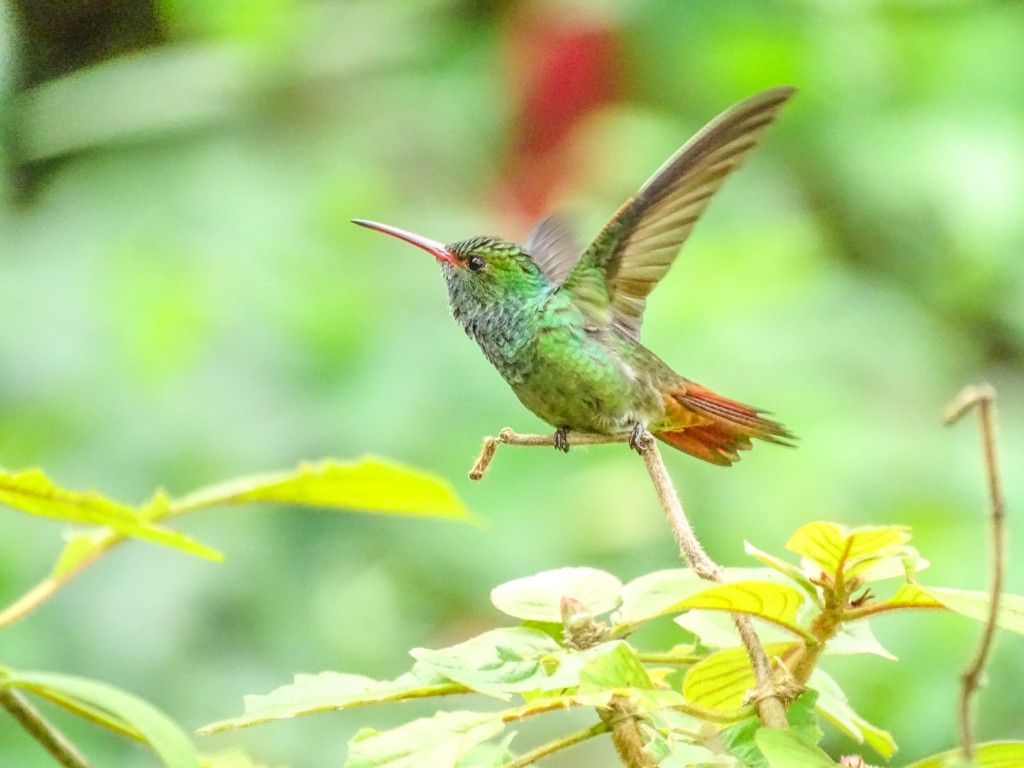
The tropics provide one of the richest and most varied arrays of photographic opportunities of anyplace on earth…but they also provide definite challenges for any photographer…including, of course, Point and Shoot Nature Photographers. From the dense, dark, dim (and often damp) canopy of the rain and cloud forests to the harsh light of the dry forest and uplands in the rain-shadow of the mountains, exposure is always a difficult issue. Then too, focus in the rain forest, with all the vegetation, and the dim light, can be a real problem. It is not much easier in the glare of the dry forest.
I recently enjoyed a week at the Rain-forest Lodge at Pico Bonito in Honduras, spending each day in different location in the area…from deep rain-forest on the shoulders of the mountains, to coastal mangrove lined rivers, to the Honduran Emerald Reserve in the dryer country inland.
It was not a photo expedition…we were primarily birding…but it gave me a chance to experience the joys and challenges of the tropics first hand, and to put my super-zoom point and shoot to the test. For stationary and particularly cooperative birds (and since it was a ZEISS sponsored trip and I was one of the leaders), I also carried a light-weight digiscoping rig…the compact ZEISS DiaScope 65FL spotting scope, a 30x wide-field eyepiece, a Canon S120 on the Digidapter for ZEISS, and the wonderful Roadtrip carbon fiber travel tripod from MeFoto…the whole thing weighing in at something under 6 pounds.
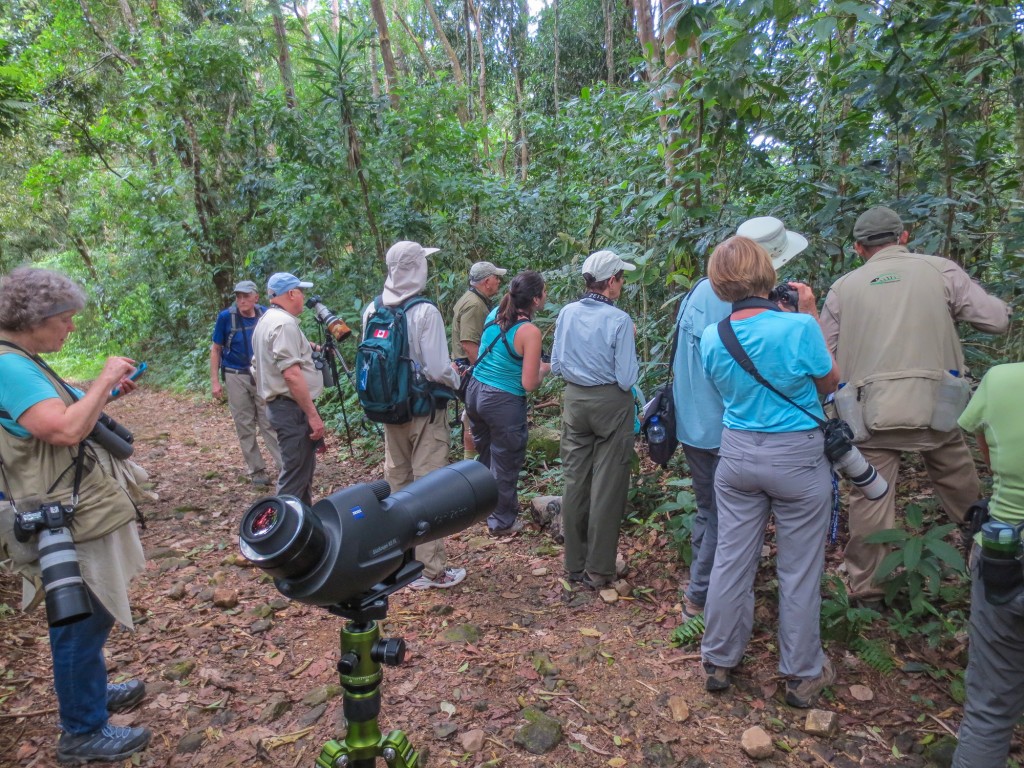
In my group there were, of course, people carrying Canon 7Ds and either the 400mm prime or the 100-400 zoom, so I had a chance to observe and compare how the full DSLR/Long Lens rig handled the same tropical situations. I have to say, my complete outfit, super-zoom P&S, and the digiscope rig, weighed less than their body and lens…even if they were shooting off-hand. One gentleman carried a full sized tripod and a gimbal head on every outing. That is real dedication. 🙂
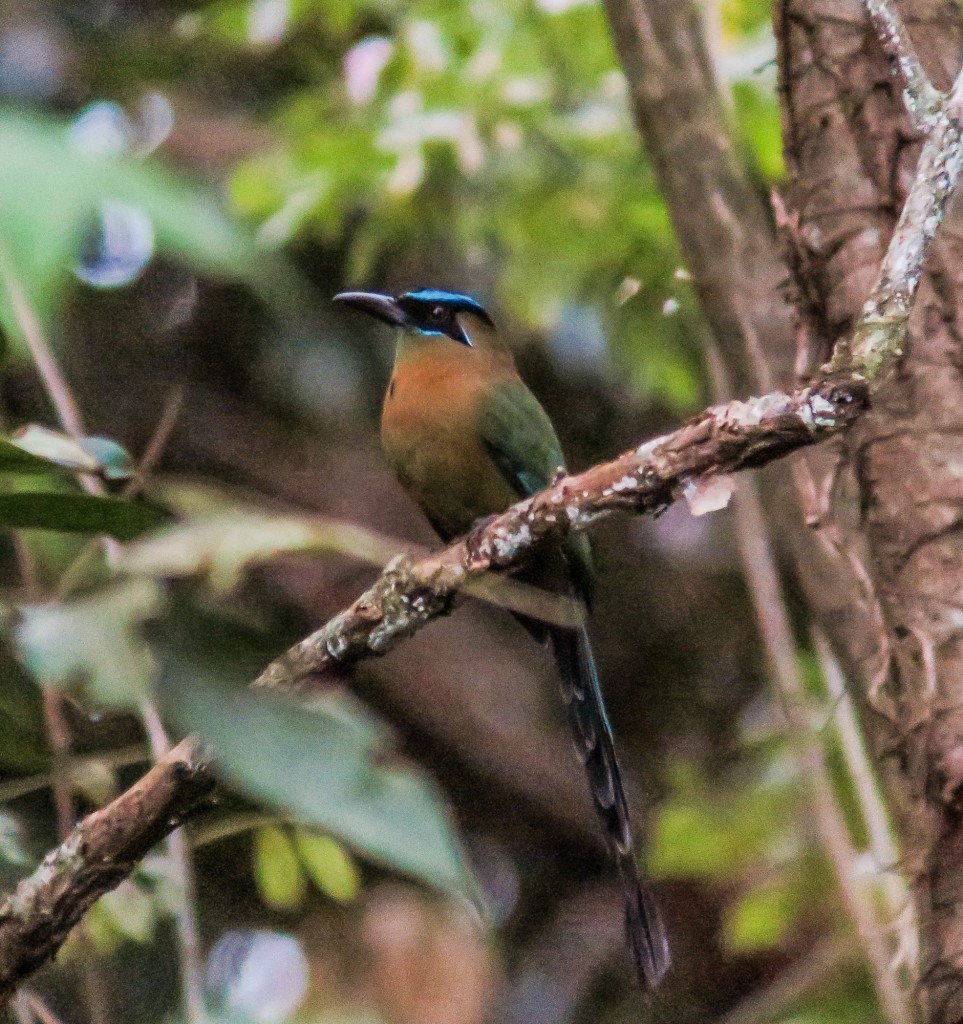
The first challenge in the tropics is always going to be light. My DSLR toting friends were shooting at ISO 6400 most of the time in the rain-forest, and I was pushing ISO 3200 for most shots. Even-so I had to dial the shutter speed down from my usual 1/640th of a second to 1/250th or even 1/160th to get enough light for a decent exposure. The Image Stabilization on the Sony HX400V handled the slower shutter speeds well, but detail at ISO 3200 suffered. I got the shots, but not always totally what I might have wanted. The tropics push any camera to its absolute limits.
To complicate matters, most P&S super-zooms have a maximum aperture of between f6.3 and f6.7 at the telephoto end…a far cry from a Canon 400mm f2.8 or even the 400mm f4. However, that is f6.x at 1200mm or greater equivalent. If you zoom back to 400mm the aperture will be not much different than the fixed Canon lens. It is always a trade off when it comes to cameras.
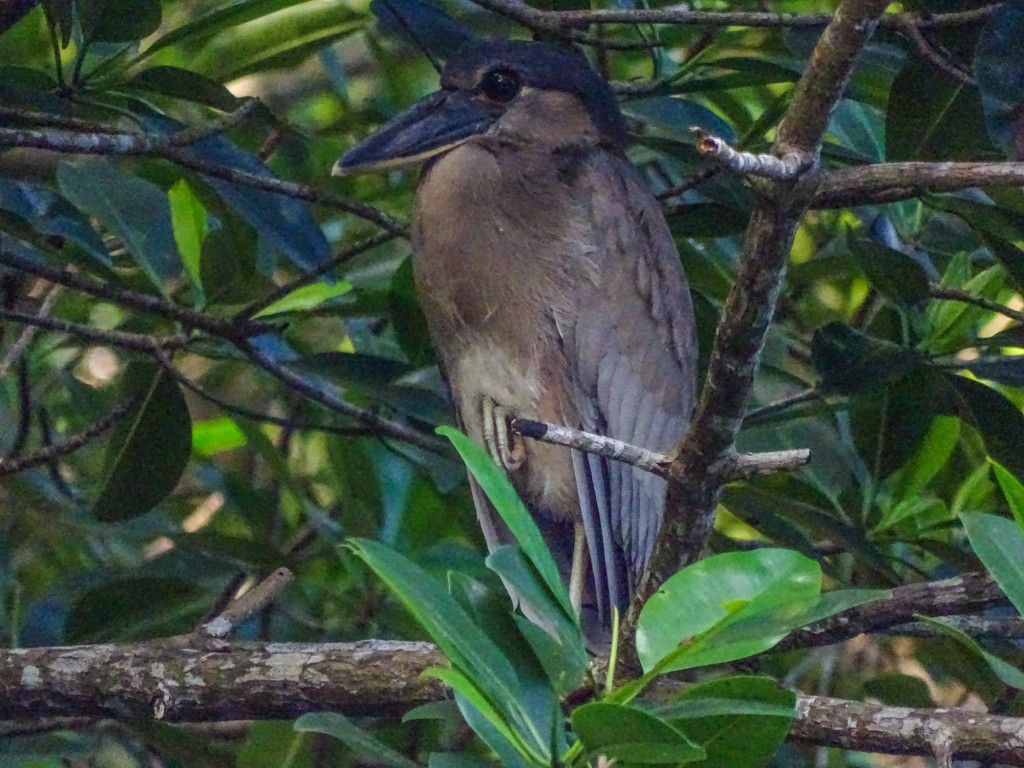
For the Point and Shoot photographer I recommend my standard wildlife settings: shutter preferred, Auto ISO (with the upper limit set as high as possible). Even so, at least in rain and cloud-forest, you will find yourself using slower shutter speeds than you are comfortable with…but the Image Stabilization on most Point and Shoot super-zooms is up to the challenge. On the Sony, changing shutter speed in shutter preferred on the fly is super-easy…you simply spin the wheel under your thumb…your mileage with other brands may differ. 🙂
I regret that I did not try the High Sensitivity modes on the Sony, which would have given me ISO 6400-12800 in a pinch. It might have made a difference. I will certainly give it a try on future trips to the tropics.
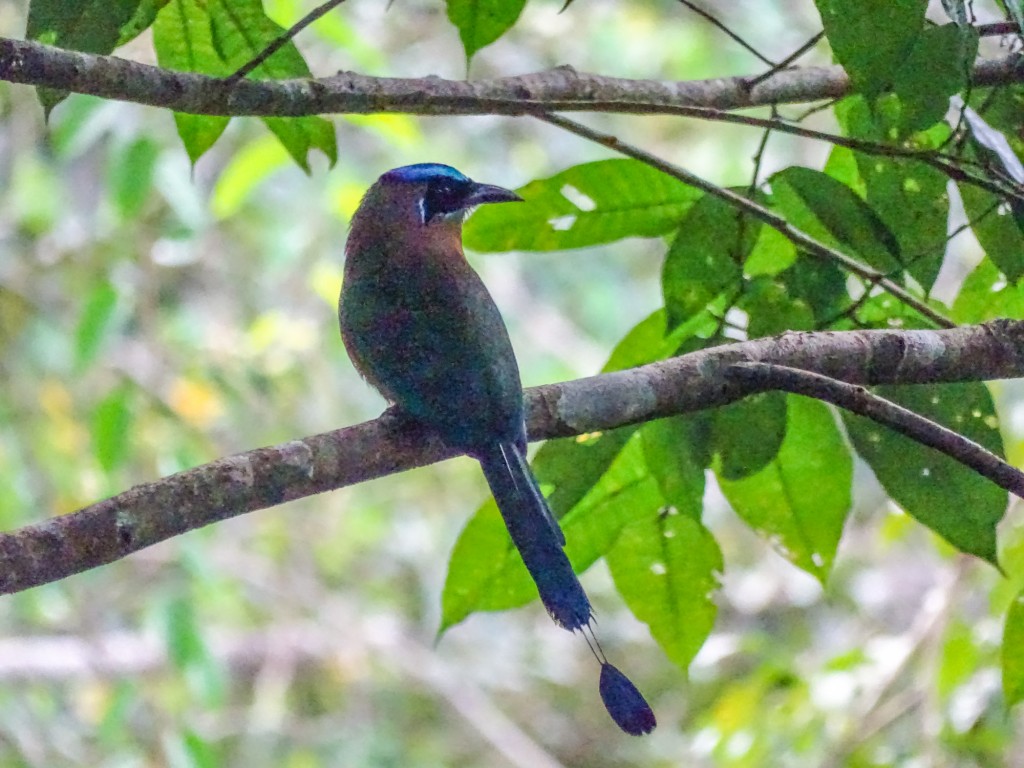
Focus is a whole other issue. Point and Shoot cameras use Contrast Detection Auto Focus, which is slower and less precise than the Phase Detection Auto Focus on full sized DSLRs. It also requires more light to work effectively. You will certainly want your focus area set to the smallest possible square in the center of the field, so that you have a chance to focus on the bird through the dense foliage.
Even then, I found myself resorting to Dynamic Focus Assist on the Sony HX400V much more often than ever before. The Sony focus system allows you to maintain auto focus, and fine-tune it using the focus ring around the lens barrel, just as you would focus a manual focus lens. It is, without a doubt, the easiest manual override auto focus of any P&S camera on the market, and I certainly appreciated it by the end of my time in Honduras. The only thing that would have made it better would have been a higher resolution Electronic View Finder so I could have seen when the bird was in focus more easily.
Almost all P&S super-zooms today have some kind of manual override on the auto focus…or straight up manual focus…but none are as quick, easy, and intuitive as the Sony system. Still, if you are headed for the tropics, dust off your manual and find out how to manually focus your camera. 🙂
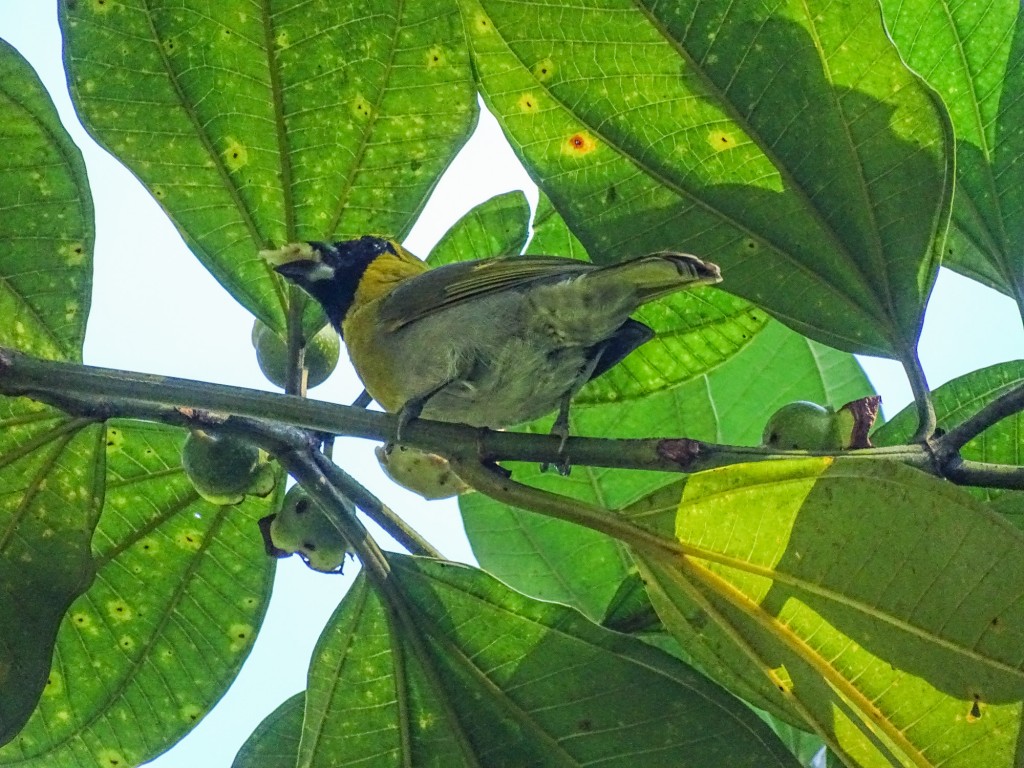
For all the difficulty in focusing, however, I am pretty sure I got as many sharply focused images as my DSLR friends. Birds under the canopy will generally sit still long enough to find focus.
Of course, there are areas in the tropics that have lots of light! We visited the Cuero y Salada Wildlife Refuge at the junction of two mangrove lined rivers near the Caribbean coast. To get there we rode a “banana train”…a narrow guage, open car, toy train that was used in the early 1900s to transport bananas from the plantation near the coast, 9 km inland to the railhead. Despite the fact that there were local paying passengers on the train, we stopped often for birds along the way.
Even along the river we found some birds in good light. And, with enough light, the super-zoom P&S always performs well. These shots are satisfying, especially since they were taken hand-held from a boat.
In the dry forest, and in the inland valleys, the super-zoom gave me the reach to capture birds from the bus on the road, and from respectable distances in the forest…as well of macros of some interesting butterflies.
And of course, at the wide end the P&S super-zoom captures the grand tropical landscape.
Sports Mode, or tracking auto focus, even makes hummingbirds at feeders and perched possible.
Just for sake of interest I will share one more digiscoped image, again taken with the Canon S120 P&S through the 30x eyepiece on the ZEISS DiaScope 65FL spotting scope, using the Digidapter for ZEISS and the MeFoto Carbon Fiber Roadtrip tripod. This is a particularly difficult shot due to the low light and the foliage between me and bird.
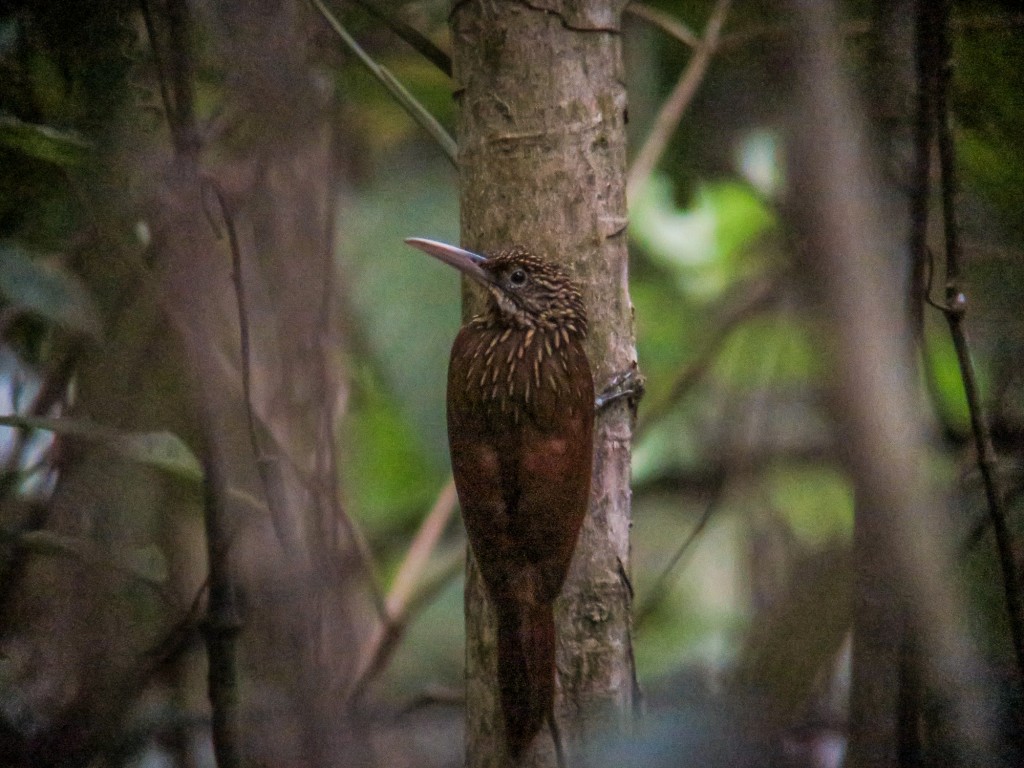
So, how does the P&S super-zoom fair when compared to a full scale DSLR/Long lens rig in the tropics. My good friend Diane Porter was shooting beside me most of the trip, with her Canon 7D Mk2 and the 100-400mm Canon IS Zoom. She has kindly allowed me to borrow a few of her shots for comparison. Of course, her shots had to be heavily cropped to equal the scale of the 1200mm equivalent zoom on the Sony. It is a testimony to the quality of the Canon 7D Mk2 that the images hold up so well to heavy cropping.
You will notice that the better the light, the closer the Sony P&S comes to the full sized rig. The first comparison is not totally fair to the Sony, as I used the full 2x Clear Image zoom for the equivalent of 2400mms of reach. Digital zoom (while the Sony system is among the best), will never equal the quality of optical zoom.
I will give you one more comparison. This time it is a digiscoped Trogon, digiscoped at the short end of the digiscoping range…and again at 3200 ISO to cope with the low light levels under the rain-forest canopy.
(Just for fun, here is Diane and her rig, playing host some kind of whiptail lizard.)
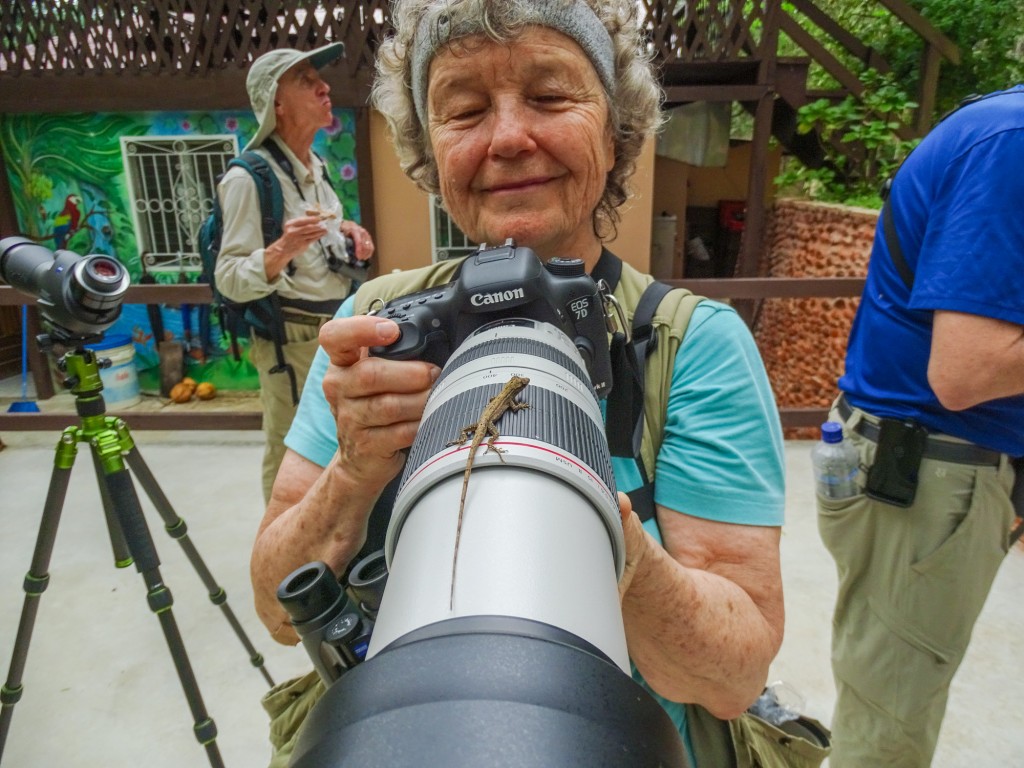
Photography is about choices as much as anything. When we choose the compact ease and flexibility of a Point and Shoot super-zoom over the more conventional DSLR/long lens rig, we know that we will sacrifice some image quality. Conditions in the tropics test the limits of any camera and lens, but all in all I will still be packing my P&S super-zoom on my next tropical adventure!


























![10959536_10205816457561290_3923375595282047017_n[1] Diane Porter. Canon 7D Mk 2, 100-400mm zoom. ISO 6400. 1/500 @ f7.1 Cropped for scale.](https://i0.wp.com/psnp.info/psnp_/wp-content/uploads/2015/02/10959536_10205816457561290_3923375595282047017_n1.jpg?w=309&h=285&ssl=1)

![10990779_10205846200064834_4258371622344264732_n[1] Diane Porter. Canon 7D Mk2, 100-400mm zoom. ISO 1600. 286mm. 1/320th @ f5.6](https://i0.wp.com/psnp.info/psnp_/wp-content/uploads/2015/02/10990779_10205846200064834_4258371622344264732_n1.jpg?w=279&h=279&crop=1&ssl=1)


![1462803_10205795371914162_7998860172088771907_o[1] Diane Porter. Canon 7D Mk2, 100-400mm zoom. ISO 800. 400mm. 1/500th @ f8. Cropped for scale.](https://i0.wp.com/psnp.info/psnp_/wp-content/uploads/2015/02/1462803_10205795371914162_7998860172088771907_o1.jpg?w=322&h=280&ssl=1)

![10974580_10205803616920282_6499631909795911514_o[1] Diane Porter. Canon 7D Mk2. 100-400mm zoom. 400mm. ISO 800. 1/320th @ f5.6](https://i0.wp.com/psnp.info/psnp_/wp-content/uploads/2015/02/10974580_10205803616920282_6499631909795911514_o1.jpg?w=316&h=316&crop=1&ssl=1)

![1487305_10205875433475651_1227503757680150572_n[1] Diane Porter. Canon 7D Mk 2. 100-400mm zoom. Cropped for scale.](https://i0.wp.com/psnp.info/psnp_/wp-content/uploads/2015/02/1487305_10205875433475651_1227503757680150572_n1.jpg?w=279&h=279&crop=1&ssl=1)
Have you found a good camera sleeve for the Nimon P900? I will go to Panama next month and is wondering if I should get one, but not sure of the size that will fit this camera.
Thank you.
I just ordered the 18 inch OpTec sleeves and hope they will work. Have not tried them yet.
I just ordered the same 18″ OpTec sleeves also. Hopefully they will work too!
Were there lots of mosquitoes and chiggers when you were in Panama?
I tried mine on. They are better than nothing, but if you need them on it is probably raining too hard for photography anyway 🙂 I saw very few mosquitoes and no chiggers in Panama but I was out on the islands in Bocas del Toro.